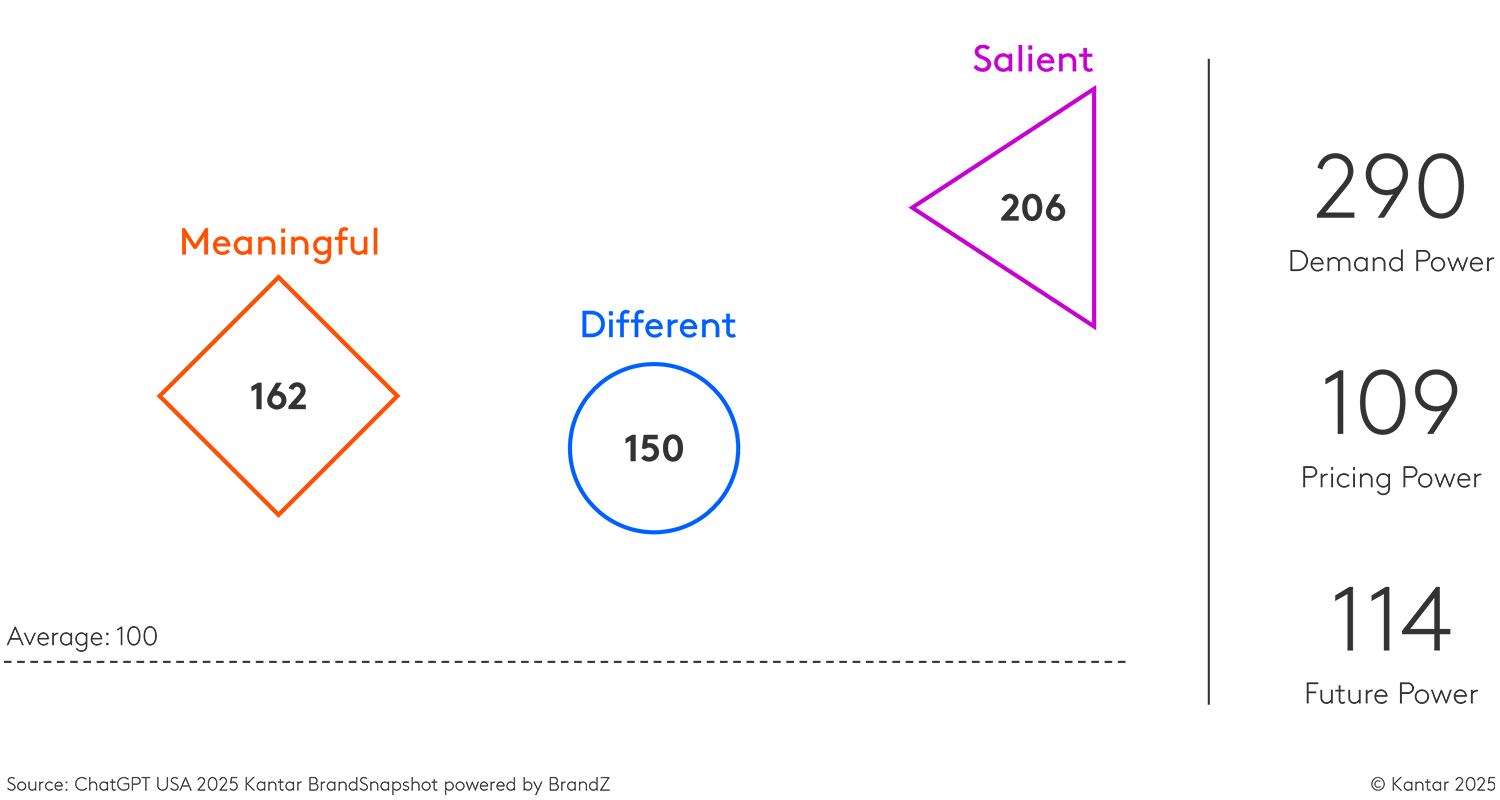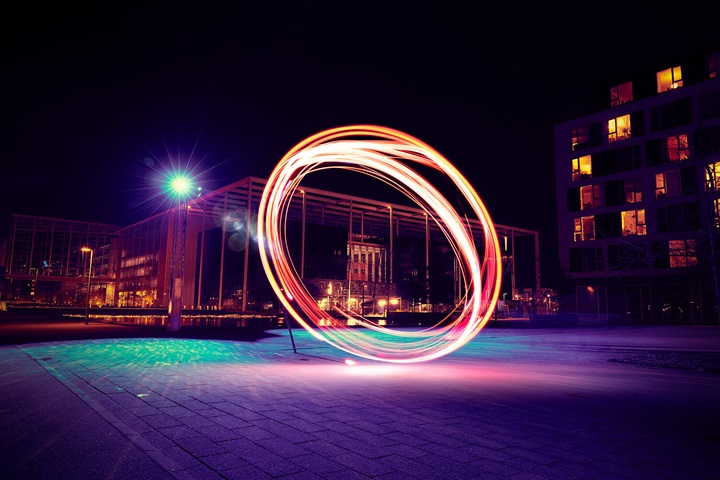When most people think about generative AI, the first name that comes to mind is OpenAI’s ChatGPT. Kantar’s BrandSnapshot finds that ChatGPT is the most salient of all the AI tools measured among consumers in the US and India. However, there is more to long-term success than being the first brand to come to mind. Our research suggests ChatGPT would benefit from improving its perceived differentiation if it is to stay ahead of its competition.
Generative AI represents a technological tsunami
This year marks the 20th anniversary of BrandZ valuations. But it was in 1998 that BrandZ began tracking the performance of brands as they navigate social, economic, and technological changes. Of those three forces, technological change has had the most impact on the ranking since then, with brands like Apple, Google, and Microsoft riding the wave of technological change and displacing more established brands as they have grown in importance and value.
But now the latest technological tsunami created by generative AI threatens to upend the established order once again, as OpenAI’s ChatGPT enters Kantar BrandZ’s Global Top 100 at number 60 with an estimated value of US$43.6bn.
First mover ChatGPT has a lot of competition
The initial release of ChatGPT in November 2022 signalled that generative AI was ready for the big time, and big it has proved to be. Just two months later the chatbot had 100 million monthly active users, far outdistancing earlier consumer applications like TikTok, Instagram, and Facebook. This rapid growth has continued. In February 2025, ChatGPT developer OpenAI's weekly active users passed 400 million.
However, while ChatGPT may be the successful first mover, there are many other companies trying to benefit from its success and oust it from its lead position. Today, it is estimated that there are 70,000 AI companies worldwide, making competition fierce. To stay ahead, ChatGPT will need to stay sharp and find new ways to stand out.
ChatGPT is Meaningful, Salient, and a Star brand
Kantar’s BrandSnapshot is a free tool for exploring brand equity and offers insight into the competitive generative AI landscape. It confirms that ChatGPT is the best known of the AI tools available. However, strong brands possess more than just speed to mind or Salience. Strong brands combine that advantage with Meaning (a combination of relative relevance and depth of emotional connection) and Difference (a combination of perceived uniqueness and category leadership). Provided a brand offers its users a good experience, the degree to which a brand is perceived as Meaningful often reflects its Salience. This is exactly what we see in BrandSnapshot. ChatGPT is not only the most Meaningful and Salient brand; it is also classified as a Star brand, meaning it scores highly on both dimensions. Adobe Firefly and Microsoft Copilot closely follow, with most other brands trailing far behind these top three.

But is ChatGPT perceived as different enough?
When we turn to perceived Differentiation, however, we find far less variation between brands. More Salient brands are slightly more likely to be seen as Different (a function of their bigger user base) but as highlighted in this study, the range of scores is much less than for the other two key equity metrics.
This finding confirms the opinion of Gary Marcus, a professor emeritus of cognitive science at New York University, who suggests that large language models like ChatGPT have become essentially commoditised. He says, “Everybody’s using the same formula to make essentially the same kind of thing, which makes it hard for any of them to say, you know, their product is distinct from anybody else’s.”
Why is this important? It is important because perceived differentiation is how brands justify their price point. Despite generating $3.5 billion in revenue in 2024, OpenAI is expected to lose $5 billion overall. OpenAI CEO Sam Altman admits that despite charging $2,400 a year for ChatGPT Pro, higher than expected usage means that even this tool is operating at a loss. To sustain that price point, let alone raise it, OpenAI needs to better differentiate ChatGPT from its closest competitors.
Raising prices demands further differentiation
As of now, OpenAI is pursuing competitive advantage by investing huge amounts of capital in research and development and rapidly introducing new iterations of its technology. To sustain that investment, however, OpenAI is reported to be considering raising subscription prices and possibly introducing usage-based pricing for specific services. This will be harder to do if users perceive close competitors to offer similar capabilities at cheaper prices. There is more to perceived differentiation than technical prowess; how a platform delivers its findings can be just as important as the accuracy of those findings.
Beyond smart to personable
A recent article in the New York Times addresses this very point, but in relation to a lesser-known competitor to ChatGPT, Anthropic’s Claude. Noting that Claude has a big fanbase among tech insiders, the article ascribes the chatbot with characteristics that differentiate it from similar tools: more attentive, creative, and empathetic.
Amanda Askell, a researcher and philosopher at Anthropic, oversees the fine-tuning of Claude’s character and says the difference is intentional. Claude, she explains, is designed to engage a wide audience without pandering to the person it’s talking with. As the race to build the smartest generative AI starts to yield diminishing returns, the user’s sense of appreciation when using the tool may become just as important as the answers themselves.
ChatGPT is a Star today, but what about tomorrow?
The impact of generative AI is massive and growing daily. ChatGPT is a ‘Star’ brand with strong equity now, and even more potential ahead. But to fund future investments in ChatGPT and realise that potential, OpenAI must think carefully about how best it can differentiate itself from its competitors. The answer may not lie in building better technology, but in creating better interactions with the humans it serves. The more personable and likeable the platform becomes, the stronger its hold on users and the brighter its future will be.
Discover the world’s most valuable brands and insights to help shape your brand’s future in the 20th anniversary edition of BrandZ’s global report now available at www.kantar.com/campaigns/brandz/global
Kantar BrandSnapshot is a free interactive tool powered by BrandZ’s wealth of data and validated Meaningful Different and Salient framework. Designed to give you a complete picture of brand equity in competitive context, BrandSnapshot delivers insights on over 15,000 brands in 40+ markets.
Take your brand strategy beyond the chat! Explore BrandSnapshot on Kantar Marketplace for free today.



